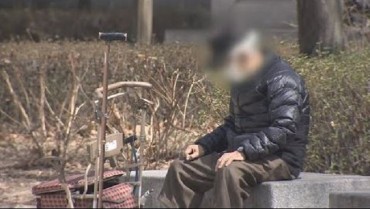
Chinese customers browse products at an outlet of the South Korean discount store chain Lotte Mart in Beijing’s Wangjing district, also known as Koreatown. (image: Yonhap)
BEIJING, Aug. 20 (Korea Bizwire) — A Chinese sign that read “Hanguocheng,” meaning South Korean food court, on the building of a restaurant mall in Wangjing, the once prosperous Koreatown in northeastern Beijing, has been replaced by “Meishijie,” or Gourmet food street.
The change reflects an ever-rising anti-South Korean sentiment in China amid the current diplomatic row that is souring diplomatic ties between the two neighboring countries.
South Korea and China have been at odds over the deployment of a U.S. missile shield called the Terminal High Altitude Area Defense (THAAD) system, which is being installed in South Korea. Beijing claims it could harm its strategic interest.
Back in 2010, many South Korean businesspeople and their families began to settle in Wangjing joining the bandwagon of “hallyu,” or Korean Wave, in China.
According to data released by the South Korean Embassy in Beijing, the number of South Koreans who stayed more than six months in China last year reached about 300,000.
About 95,000 South Koreans reside in Beijing and Tianjin, northeastern China; 60,000 in Shanghai and the Huadong region; and 65,000 in Qingdao and the Shandong region.
The Koreatown in Wangjing is home to about 10,000 South Koreans, an exemplification of “Little Korea in China” that boasts of well-established infrastructure. Once a rural village in the vicinity of Beijing, Wangjing saw South Korean supermarkets, churches, hair salons and markets spring up following the settlement of South Korean residents and businesspeople.
Living in Wangjing gives South Koreans a sense of home as popular Korean foods including boiled pig trotter “jokbal” and fried chicken and beer, or “chimaek,” are available, sometimes faster than back home.
“Wangjing was the countryside with an empty field just 15 years ago,” said the owner of a supermarket in Wangjing’s Xiyuan Sanqu district, who declined to be named. “As many South Koreans got to live together and various amenities were introduced, Chinese people also came in with the idea of Wangjing being a good place to live in spreading by word of mouth.”
In Wangjing, South Korean companies and vendors benefited from a business boom on the crest of the South Korean culture wave. Since 2010, however, they were battered by decreasing competitiveness and increasing manpower costs, losing out to local counterparts.
The South Korean community, including Wangjing, has found itself at the center of the ongoing THAAD row since July last year, when Seoul announced that the country would host the defense system.
The decision has caused its relations with China to plunge to their lowest level in many years, with South Korean businesses in China struggling under what Seoul sees as retaliatory measures.
Many South Koreans closed their restaurants and removed any mention of South Korea from signs in the face of moves to boycott South Korean products and eateries coupled with growing anti-South Korean sentiment.
Apartments and houses evacuated by South Korean businesspeople have been taken up by the Chinese middle class and Chinese young people working for foreign-invested companies.
The phenomenon of hollowing out is seen in not only Wangjing but other areas where a large population of South Korea residents live.
Choi Chung-gwang, a South Korean businessman who started a Korean restaurant in 1993, just one year after the establishment of diplomatic ties between Seoul and Beijing, said the hallyu boom in the 2000s helped raise the popularity of South Korean restaurants and products.
“But South Korean companies have lost their competitiveness due to China’s continued development and the THAAD row drove the South Korean community to a level seen as the worst ever,” he said.
Choi has switched his business to an artificial intelligence-based catering service for pet dogs. “It’s about time we ought to explore more technological and creative business sectors in which Chinese people cannot catch up with us,” he added.
(Yonhap)







